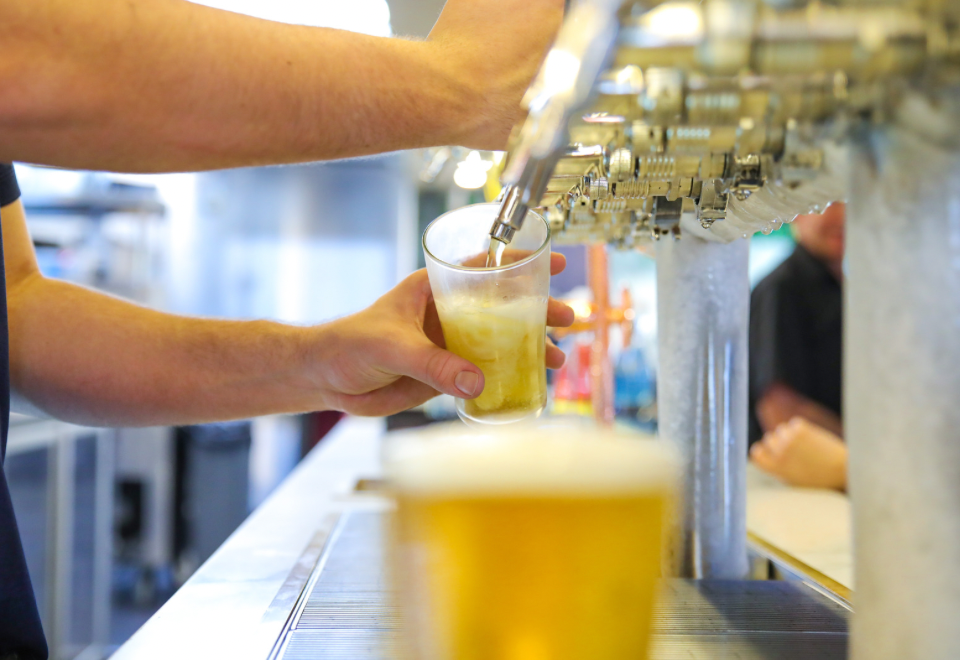Could lower strength beers save lives?
Lucy Kirk
24 January 2023, 2:45 AM
 Royal Life Saving Australia have said that this summer, six people drowned on Christmas Day and Boxing Day alone, and more than three-quarters of those who have died over the summer period were male.
Royal Life Saving Australia have said that this summer, six people drowned on Christmas Day and Boxing Day alone, and more than three-quarters of those who have died over the summer period were male.Drinking is arguably an important part of Australian culture, which is why new academic research finding Australians are leading the world when it comes to the consumption of lower strength beers is somewhat of a mystifying discovery.
And, amid anticipation for another Australia Day at the beach, the discovery comes as good news for Royal Lifesaving Australia who have been desperately asking men to ‘make the right call’ when it comes to drinking around water.
“In more than a quarter of all drowning deaths in inland waterways over the ten years to 2020/21, the person who drowned had a blood alcohol content reading of more than 0.05 per cent,” said Royal Life Saving Chief Executive Officer Justin Scarr.
“The biggest single factor is alcohol. If you’ve had a few drinks, your coordination levels drop and you lose your inhibitions,” he said.

While the Royal Life Saving Society warn that the risk of drowning doubles on public holidays and long weekends, a new trend challenging, or at least, modifying the Australian drinking culture could just be the answer to reducing those fatality rates.
A research paper by Professor Kym Anderson of the School of Economics and Public Policy, University of Adelaide found that over 30 per cent of beer sales in Australia are now mid, low or zero strength, up from 23 per cent in the 1990s.
“Over the past years we have seen beer drinkers reduce their pure alcohol consumption by 3 million litres as lower-alcohol beer products have become more popular. It’s clear that our brewing industry’s innovation in this area has made a significant difference to consumption levels,” said John Preston, CEO of the Brewers Association of Australia.
The report also found that the share of alcohol consumed as beer in Australia, at two-fifths (down from two-thirds in the 1970s), is now the same as in the rest of the world, demonstrating that Australians are consuming beer more selectively and responsibly.
Australia now sits around midway amongst OECD countries in terms of alcohol consumption per adult.
“This report highlights both the strength of the brewing sector in Australia and its contribution to the unparalleled progress that has been made in Australia on responsible alcohol consumption,” said Mr Preston.
Importantly, Professor Anderson stated that “lower-alcohol beers are becoming more similar in flavour and style to full-strength beers.”

She emphasised throughout the report that a decrease in tax on mid-strength beers would encourage more substitution away from full-strength beer, and possibly also from wines and spirits.
“In so doing, Australia’s overall alcohol and calorie consumption would decline,” said Professor Anderson.
While many Australian’s are jumping on board the trend, Mr Scarr knows that any alcohol in your system is likely to affect your ability to navigate unexpected circumstances.
“If your boat tips, a wave hits you, or the conditions change rapidly you need to be able to think clearly and quickly, and your reflexes and coordination needs to be at their best so you can get yourself to safety,” he said.
For those that are still choosing to drink this Australia Day, Mr Scarr offers three key pieces of advice to ensure they get home to their loved ones safely at the end of a great day out.
“Leave the booze until safely away from the water, look out for your mates and pull them into line if they’re under the influence and thinking about doing something reckless near water such as swimming or boating.
“Lifejackets can make the difference between life and death. With the modern, comfortable design of lifejackets which doesn’t inhibit your recreational activities, there is really no excuse not to wear a lifejacket.
“The third safety tip is not to go alone. Whenever you’re on, in, or near the water having someone with you to help in the event of an emergency is vital. There are so many factors we can’t control – medical incidents, submerged items, sudden changes in the conditions. Having a mate to help improves the odds of getting home safely.”
Royal Life Saving Australia have said that this summer, six people drowned on Christmas Day and Boxing Day alone, and more than three-quarters of those who have died over the summer period were male.
In light of this harrowing news, they are urgently asking men, in particular, to look out for their mates and to keep each other safe while enjoying Australia’s beautiful waterways this Australia Day.



